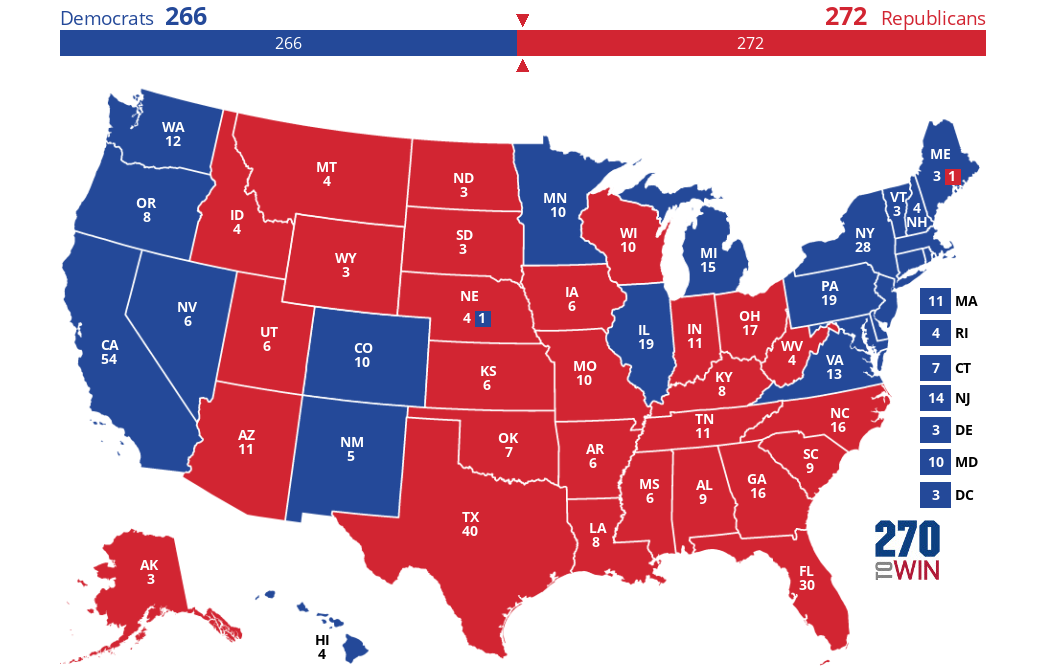Joe Biden is the weakest first term Democratic president since Grover Cleveland’s first term in 1885. And if he looks vulnerable after the 2022 midterms, Trump may jump in the race.

“I may even decide to beat them for a third time. Okay? For a third time.”
That was former President Donald Trump at the Conservative Political Action Conference (CPAC) on Feb. 28, hinting at another potential run for President in 2024. If he pulled it off, Trump would be the first incumbent president to lose to then be reelected again since Grover Cleveland did it in 1892.
Naturally, this has led to intense speculation in the Beltway and nationally about another potential Trump presidential bid. So, will Trump run again?
Under normal circumstances, you might expect President Joe Biden to run again in 2024, but by then he will be 81 years old, and so it is uncertain if he will do so. But, maybe if Trump is running again, there is increased pressure for Biden to run again, too, especially if Democrats think Biden is the only one who can beat Trump.
So, why might Trump be thinking of another run? Here’s a few factors to consider.
First and foremost, it is really difficult to defeat an incumbent president. Sitting presidents who have stood for re-election have won about 70 percent of the time, although until the 1800s, state legislatures generally chose electors.
Since 1948, incumbent first-term presidents have a 67 percent reelection rate in their first terms. Harry Truman won in 1948, Dwight Eisenhower was re-elected in 1956, Lyndon Johnson won John Kennedy’s second term in 1964, Richard Nixon was re-elected in 1972, Gerald Ford was ousted in 1976, Jimmy Carter was ousted in 1980, Ronald Reagan was re-elected in 1984, George H.W. Bush was ousted in 1992, Bill Clinton was re-elected in 1996, George W. Bush was re-elected in 2004, Barack Obama was re-elected in 2012 and Trump was ousted in 2020.
So, given Biden’s strong chance of being reelected should he run again, that might field weaker Republican candidates seeking to oust him in 2024. Which, could create an opening for Trump.
Here’s another factor: Trump had big coattails in 2020. For what it’s worth, Trump got more votes at 74 million than any Republican candidate in history, losing by a scant 43,000 votes in Arizona, Georgia and Wisconsin (which if they had gone the other way would have resulted in a 269 to 269 tie in the Electoral College, which would have sent the race to the House of Representatives), the GOP picked up 13 seats in the House in 2020, nearly taking back, and with the Senate split evenly 50 to 50, Joe Biden is the weakest first term Democratic president since Grover Cleveland’s first term in 1885, when Republicans controlled the Senate.
2020 was heartbreaking, but by no means as catastrophic politically for Republicans as 2008 (when after Arlen Specter’s defection in 2009, Democrats got a filibuster proof majority in the Senate), 1976 (when Democrats got a filibuster proof majority in the Senate), 1964 (when Democrats got a filibuster proof majority in the Senate), 1960 (when Democrats got 64 seats in the Senate), 1932 (when Republicans were wiped out almost to the point of extinction and after the 1934 midterms, Democrats had a filibuster proof majority in the Senate), or even 1992 (when Democrats got to 57 in the Senate).
Looking forward, Republicans stand a strong chance of reclaiming the House and/or the Senate in 2022. Trump could play a big role here, too, by campaigning for Republican candidates.
In fact, in midterm elections from 1906 to 2018, the party that occupies the White House usually loses on average 31 seats in the House, and about three seats in the Senate. And with just a 10-seat majority in the House and a zero-seat majority in the Senate, 2022 could be a very bad year for Biden and Democrats.
The more Trump puts himself into that equation, say, if he campaigns a lot and his candidates win and Republicans reclaim majorities, could go a long way to shoring up his support within the party, which remains at a high level even now.
Finally, when you look at the same electoral map in 2024, if the GOP were to flip Arizona, Georgia and Wisconsin back, taking all the same states otherwise, Trump or another Republican candidate would net 274 Electoral College votes instead of 269, assuming the Maine-Nebraska Congressional District split again, according to the projected outcome of the 2020 Census by 270towin.com.
Don’t think Trump could pull it off? He could probably pack the 43,000 voters needed into one of his signature Make America Great Again rallies.
Now, it could be that Trump really does not desire to run again at all. Maybe he’s had his fill and wants to enjoy his retirement from public life. Or, perhaps he simply hasn’t made up his mind yet.
Either way, another Trump run is definitely a possibility that Republican strategists and prospective candidates have to factor in. The longer Trump keeps the issue ambiguous, the more he may be clearing the field for a potential rematch between himself and Biden in 2024.
And, Trump keeping the issue cryptic — for now — could also serve an additional purpose because it makes it more likely Biden has to run again in 2024 at the age of 81 to oppose Trump. At that point, Biden may be reeling from the 2022 midterms if Republicans play their cards right to reclaim majorities. If Biden looks vulnerable, Trump just might run again. Stay tuned.
Robert Romano is the Vice President of Public Policy at Americans for Limited Government.







